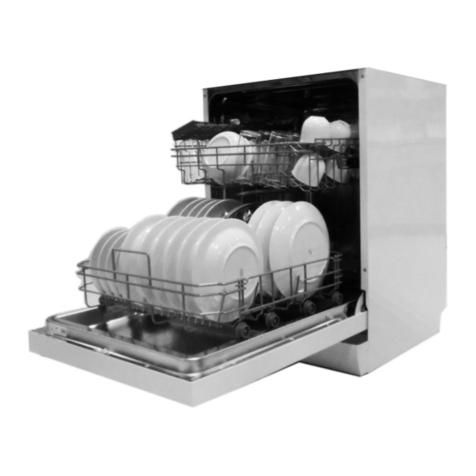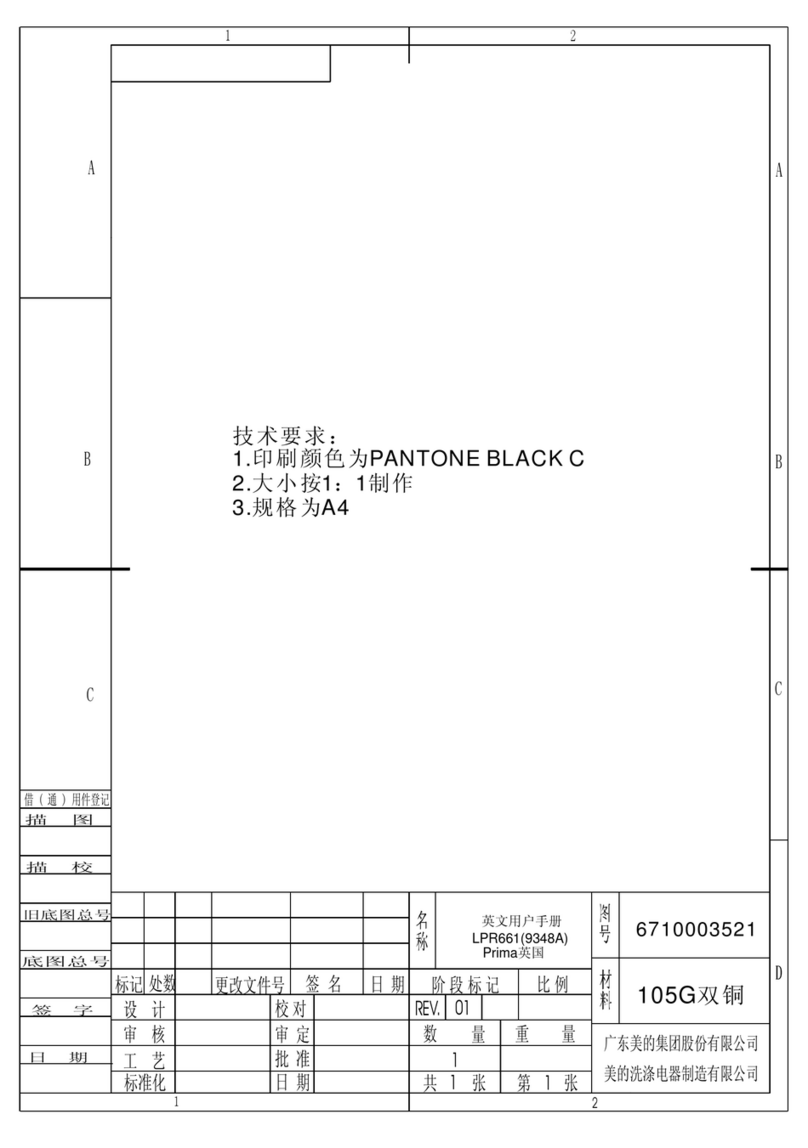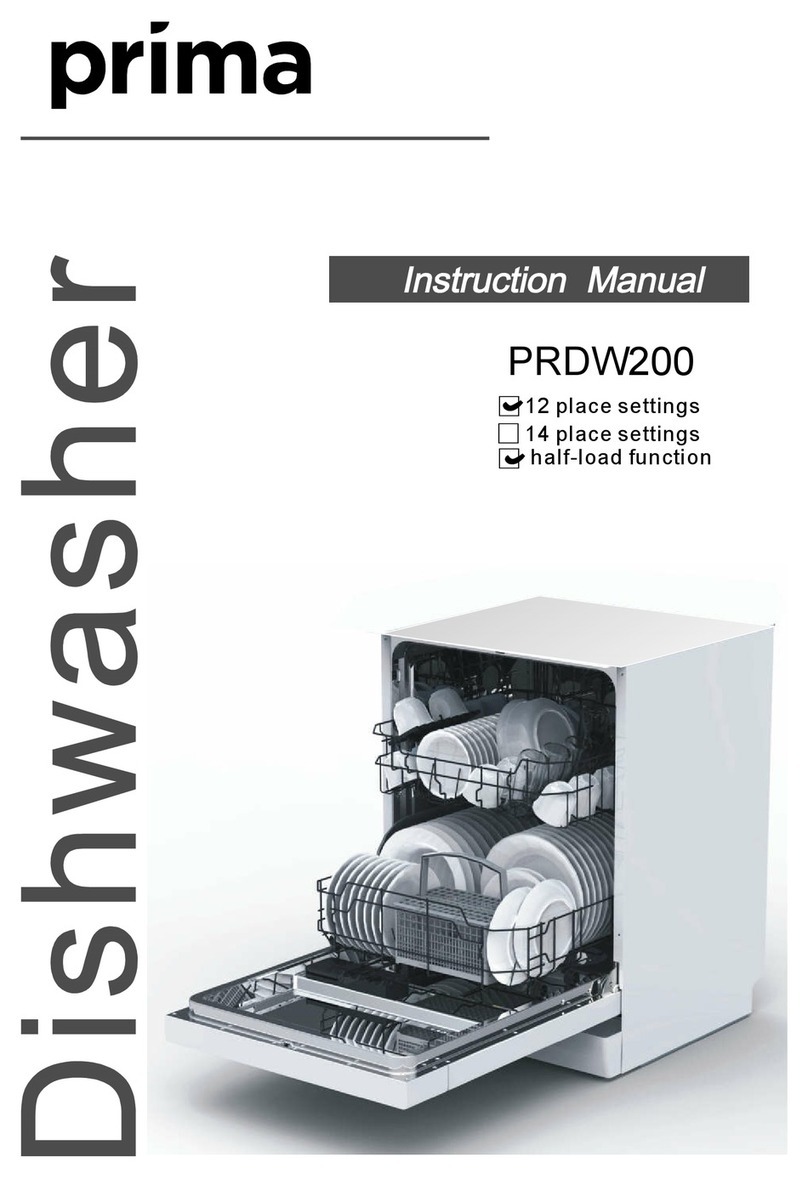Prima LPR659A User manual

LPR659A
PrimaAppliances
The PJH Group,Alder House,Slackey Brow,Kearsley,Bolton, BL4 8SL
9 place settings
10 place settings
half-load function
Alt function

To review the section on troubleshooting Tips
will help you to solve some common problems
by yourself .
Dear Customer,
Please carefully read this manual before using the
dishwasher, it will help you to use and maintain the
dishwasher properly.
Pass it on to any subsequent owner of the appliance.
This manual contains sections on safety Instructions,
Operating Instructions, Installation Instructions and
Troubleshooting Tips, etc.
The manufacturer, following a policy of constant
development and updating of the product, may
make modifications without giving prior notice.
This user manual shall also be got from the
manufacturer or responsible vendor.
Keep it as a refer in the later days.
If you can not solve the problems by yourself ,
please ask for the help of professional technicians.
Dishwashe r Features. ... ... ... ...... ...... ............ .. .. .6
A Water S often er..... ... .. ... ......... ... ... ........ . ... ... 7、
Attention before or after loading the Di shwasher
Basket s... ... ... ... ... ... ... ... ...... ... ... ... ..... .... ... ..... 12
Filtering System.............................................16
Caring for the Dishwasher..................... .........17.
B Loading the Salt into the Softener.................8、
C Fill the Rinse A id Dispenser................. ........8、
D Functio n of Detergent ............... ..................9、
Loading the upp e r ..... ... ... ... ... ... .. . ... ... ..1 3Basket
Loading the Lower .............. ... ...... ... .....1 3Basket
Wash Cycle Table................................... ........14
Turning on th e Ap pliance ... .... ..... ... ... ... ... ... ... .. 1 4
Change the Programme.............. ................15....
At the end of the Wash Cycle...........................15
Before calling for service.......................... . .....25.
Error cod es.... ... ...... ... ... .. ....... ... ... . . ...... ... ... ..26.
Techn ical information.......... ... ... ... ... ........ .....2 7..
Control Panel. ............... ...................................6
.................................. 18Installation preparation
...19Aesthetic panel's dimensio ns and installation
..............21Tension adjustm ent of the door spring
.............................. 21Connection of drain hoses
......................... 22Dishwasher installation steps
Abo ut Electricity Con nectin g.. ... ......... ... ...... ... .23
Cold Water Co nnection................. ..... ... ... ...... 24

1
.
This appliance can be used by children aged from 8
years and above and persons with reduced physical,
sensory or mental capabilities or lack of experience
and knowledge if they have been given supervision
or instruction concerning use of the appliance in a
safe way and understand the hazards involved.
Children must not play with the appliance. Cleaning
and user maintenance shall not be made by children
without supervision. For EN60335-1
This appliance is not intended for use by persons
(including children )with reduced physical, sensory
or mental capabilities, or lack of experience and
knowledge ,unless they have been given supervision
or instruction concerning use of the appliance by a
person responsible for their safety. For IEC60335-1
This appliance is for indoor use only, for household
use only.
To protect against the risk of electrical shock, do not
immerse the unit, cord or plug in water or other liquid.
Please unplug before cleaning and maintenance the
appliance .
Use a soft cloth moisten with mild soap, and then use
a dry cloth to wipe it again.
( )
( )
This appliance has been designed for use in a
domestic environment. Commercial use will invalidate
the warranty
When using your dishwasher,
follow the precautions listed below:

2
This appliance must be earthed. In the event of a
malfunction or breakdown, earthing will reduce the risk
of anelectric shock by providing a path of least
resistance of electric current. This appliance is equipped
with a cord having an equipment-earthing conductor
and a grounding plug.
The plug must be plugged into an appropriate outlet that
is installed and earthed in accordance with all local
codes and ordinances.
Improper connection of the equipment-earthing
conductor can result in the risk of an electric shock.
Check with a qualified electrician or service
representative if you are in doubt whether the appliance
is properly grounded.
Do not modify the plug provided with the appliance;
If it does not fit the .
Have a proper installed by a qualified
electrician.
Do not abuse, sit on, or stand on the door or dish rack of
the dishwasher.
Do not operate your dishwasher unless all enclosure
panels are properly in place.
Open the door very carefully if the dishwasher is
operating, there is a risk of water .
Do not place any heavy objects on or stand on the door
when it is open. The appliance could tip forward.
When loading items to be washed:
1) Locate sharp items so that they are not likely to
damage the door seal;
power socket
power socket
spilling out

3
2) Warning: Knives and other utensils with sharp points
must be loaded in the basket with their points down or
placed in a horizontal position.
Check that the detergent powder is empty after
completion of the wash cycle.
Do not wash plastic items unless they are marked
dishwasher safe or the equivalent.
For plastic items not so marked, check the manufacturer's
recommendations.
Use only detergent and rinse additives designed for
an automatic dishwasher.
Never use soap, laundry detergent, or hand washing
detergent in your dishwasher.
Children should be supervised to ensure that they do not
play with the appliance.
The door should not be left open, since this could increase
the risk of tripping.
If the supply cord is damaged, it must be replaced by the
manufacturer or its service agent or a similarly qualified
person in order to avoid a hazard.
During installation, the power supply must not be
excessively or dangerously bent or flattened.
Do not tamper with controls.
The appliance is to be connected to the water mains using
new hose sets and that old hose-sets should not be reused.
The maximum number of place settings to be washed
is 10.
The maximum permissible inlet water pressure is 1MPa.
The minimum permissible inlet water pressure is 0.04MPa.
Table of contents
Other Prima Dishwasher manuals





















